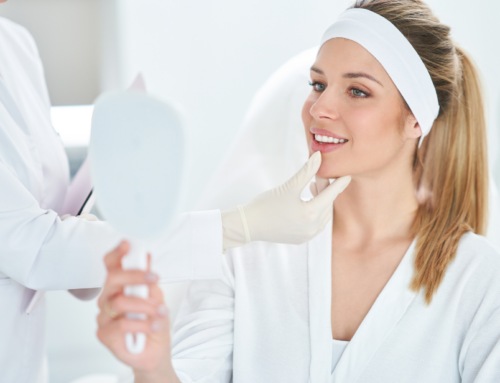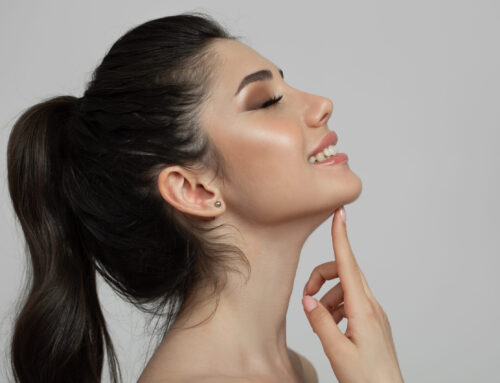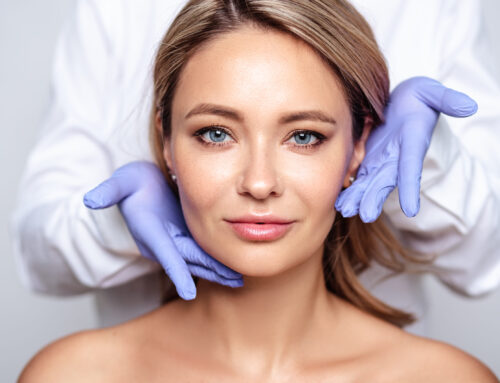Botulinum toxin A is currently available in the United States for cosmetic use. To date, and in order of their introduction, the U.S. Food and Drug Administration (FDA) approved the following five botulinum toxin type A products for cosmetic use:
- Botox® Cosmetic (onabotulinumtoxinA) – 2002
- Dysport® (abobotulinumtoxinA) – 2009
- Xeomin® (incobotulinumtoxinA) -2011
- Jeuveau® (prabotulinumtoxinA-xvfs) – 2019
- Daxxify® (daxibotulinumtoxinA-lanm) -2022
There are currently seven known serotypes of botulinum toxin, including types A, B, C1, D, E, F, and G.1 Only types A and B are the only ones formulated for clinical use, with Type A being the most common form used in clinical aesthetic practices. Type B, also known as Myobloc® (rimabotulinumtoxinB), is FDA approved for therapeutic uses such as cervical dystonia (abnormal neck muscle spasm) and chronic sialorrhea (excessive salivation).
As a new pharmaceutical product is discovered, the company that made it applies for a patent. This allows that company to eventually sell the drug with a brand name for a period, recover the investment, and profit from it. Botox®, more specifically, Botox® Cosmetic, is such a brand. Over time, a brand can become so familiar that people seem to ignore that it refers to a specific company’s product. For example, “Kleenex” is one company’s trademark and brand name, yet it has become the overall catchphrase for any number of paper-based facial tissues that people ask for. Botox® was the first FDA-approved neurotoxin for cosmetic use introduced in the United States in 2002. Due to its popularity, the term “Botox” became a colloquial catchphrase. Dysport®, pronounced ”Diss-port,“ was introduced in 2009, though several patients still often refer to that branded product as Botox®. Those who do ask specifically for Dysport® often mispronounce it as “Dye-sport.”
The commercialization of these products, along with the influence of news media, social media, and the Internet in general has added to the confusion. Whenever the sale or promotion of a product is an opportunity for financial gain, it is difficult for the consumer to know if what they read and hear is truth or muddled by sales pitches.
To be clear, each of the five forms of botulinum toxin A products were approved by the U.S. FDA for the temporary improvement in the appearance of moderate to severe frown lines in adults. Each of these products was developed and produced by different pharmaceutical companies in different countries. Technically, Botox® Cosmetic is currently the only botulinum toxin type A product that is also approved for the crow’s feet lines and horizontal forehead lines. This is because Allergan, the makers of Botox® Cosmetic made a significant investment to complete a mandatory five-step process of discovery/concept, preclinical research, clinical research, FDA review, and FDA post-market safety monitoring to get FDA-approval for those additional indications.
All forms of botulinum neurotoxin type A. share the same parent botulinum toxin type A molecule that consists of a heavy chain and a light chain linked by a disulfide bond.2 They work very similarly. However, there are nuances in how each of the products is prepared, stabilized, and produced for commercial medical use. Botox® Cosmetic, Dysport®, and Jeuveau® contain accessory proteins, whereas Xeomin® and Daxxify® have no accessory proteins. The clinical relevance of this is currently unclear, though Merz Aesthetics, the makers of Xeomin®, emphasize that their product is less likely to create antibody resistance due to the absence of accessory proteins. Other than the presence or absence of accessory proteins, additional ingredients added to the active botulinum toxin products are known as excipients. These too vary somewhat between the different brands. All but Daxxify® have human serum albumin as an added excipient, though Dysport® has a relatively small amount of human serum albumin compared with Botox® Cosmetic, Xeomin®, and Jeuveau®. Dysport® also has lactose, may contain traces of cow’s milk protein. Botox® Cosmetic and Jeuveau® are vacuum-dried, while Dysport®, Xeomin®, and Daxxify® are lyophilized. Of mention, Daxxify® contains no human or animal by-product, yet it does contain an excipient peptide known as RTP004, a special protein thought to help the botulinum toxin molecules bind to and subsequently enter nerve endings. For this reason, Daxxify® is promoted as a longer lasting alternative to the other four botulinum toxin A products.3
There are several other differences between these five botulinum toxin A products that providers should be familiar with. However, discussing these details here goes beyond the scope of what is important for the consumer to know.
One of the most common questions patients will ask is “how much do you charge per unit?” They may even try to compare the cost per unit between different brands of botulinum toxin products. However, it is important to know that the units of measurement are not the same from one brand to another. One cannot compare or convert units between different products because units are like unique fingerprints that represent the potency of each product. Each product is formulated and tested differently, so their units cannot be compared, just like one cannot compare two fingerprints.
To better understand dosing, one can consider the amount of active ingredient (botulinum toxin type A) in nanograms that a product contains.4 Look at the following comparison:
BOTOX® Cosmetic
- Approved frown line dose: 20 Units
- Amount of active ingredient: 0.18 nanograms
DYSPORT®
- Approved frown line dose: 50 Units
- Amount of active ingredient: 0.27 nanograms
XEOMIN®
- Approved frown line dose: 20 Units
- Amount of active ingredient: 0.08 nanograms
JEUVEAU®
- Approved frown line dose: 20 Units
- Amount of active ingredient: 0.12 nanograms
DAXXIFY®
- Approved frown line dose: 40 Units
- Amount of active ingredient: 0.18 nanograms
It stands to reason that although the number of Units may differ, Dysport® is not 2.5 times the dose of Botox® Cosmetic, and Daxxify® is not twice the dose of Botox® Cosmetic.
There are several published studies that statistically infer that one product is not inferior to another at doses given in their clinical trials. This implies that all products work equally well. However, anecdotal, and clinical practice impressions often vary between different brands used in different clinical settings by different providers. In short, not all providers agree that all products are equally effective for their patients’ individual needs. In fact, most experienced providers who have extensively used all these products in their clinical practices notice differences in how each product behaves. Despite product similarities, providers may see differences in onset of action (how long it takes to start working), how it spreads, how long it lasts, how it feels to the patient receiving the injections, how effective it is in reducing muscle movement, and how it improves skin quality. There are other consumer considerations that providers must consider such as patient preference, familiarity, and budget constraints.
In summary, licensed aesthetic medical providers in the United States now have five different botulinum toxin type A products to choose from for cosmetic use. These products are used similarly in clinical aesthetic practice settings, but understanding the differences and nuances between them can help providers better educate their patients about the available options. An experienced and well-informed provider can work collaboratively with the patient to determine the most appropriate choice or choices for treatment, considering individual preferences and needs.
Declarations
Neither honoraria nor payments were made for authorship.
References
- Dermatologic Use of Botulinum Toxin, Zoltan Trizna, MD, PhD, et.al., Medscape, February 06, 2019
- The Light Chain Defines the Duration of Action of Botulinum Toxin Serotype A Subtypes, Sabine Pellett, Marie Bradshaw, William H Tepp, et. al, mBio, Published online 2018 Mar 27
- Overview of DaxibotulinumtoxinA for Injection: A Novel Formulation of Botulinum Toxin Type A, Nowell Solish, Jean Carruthers, Joely Kaufman, et. al, Drugs, Published online 2021 Nov 17
- Based on published SAKURA 1, SAKURA 2, and SAKURA 3 studies.
Table of Contents
Posted on July 31, 2023




